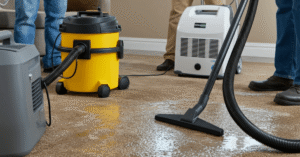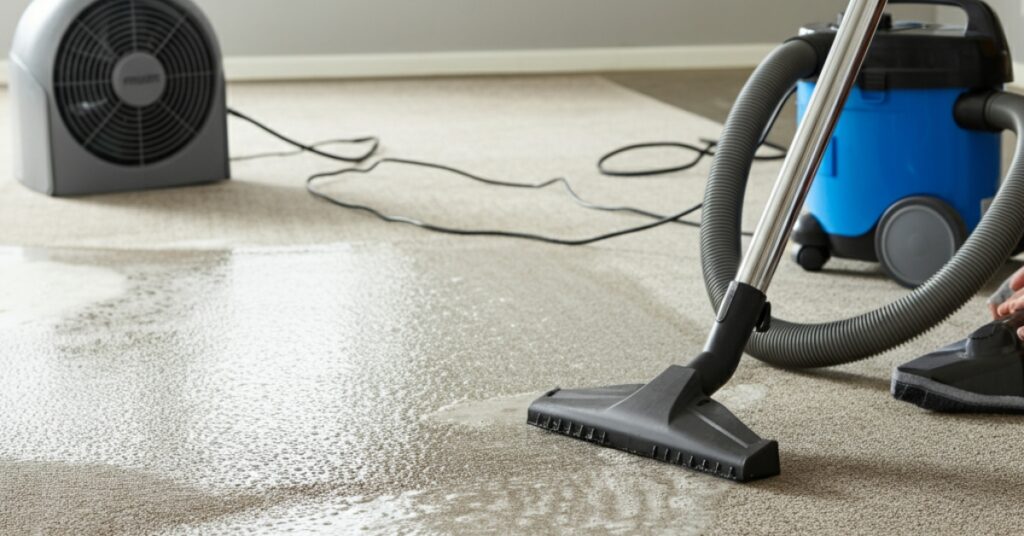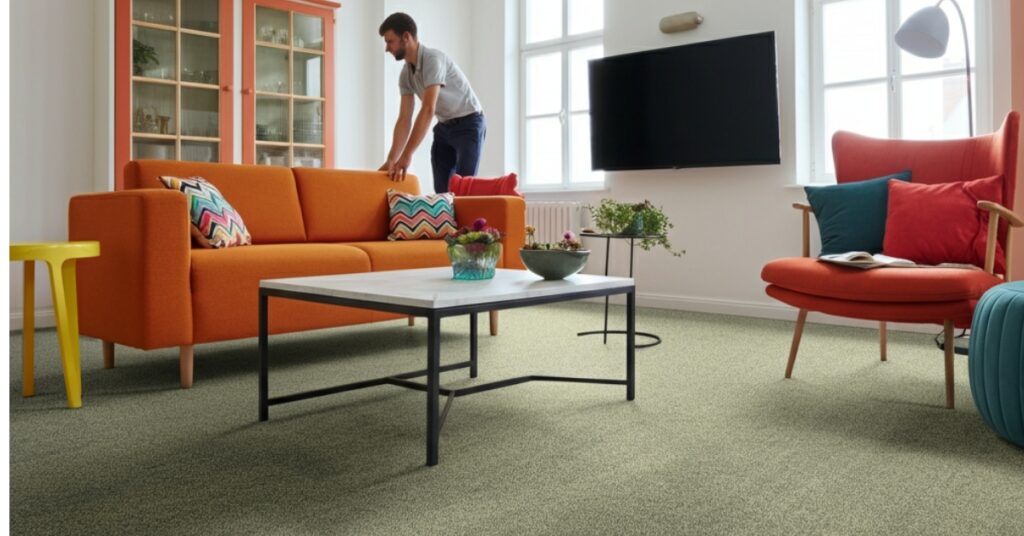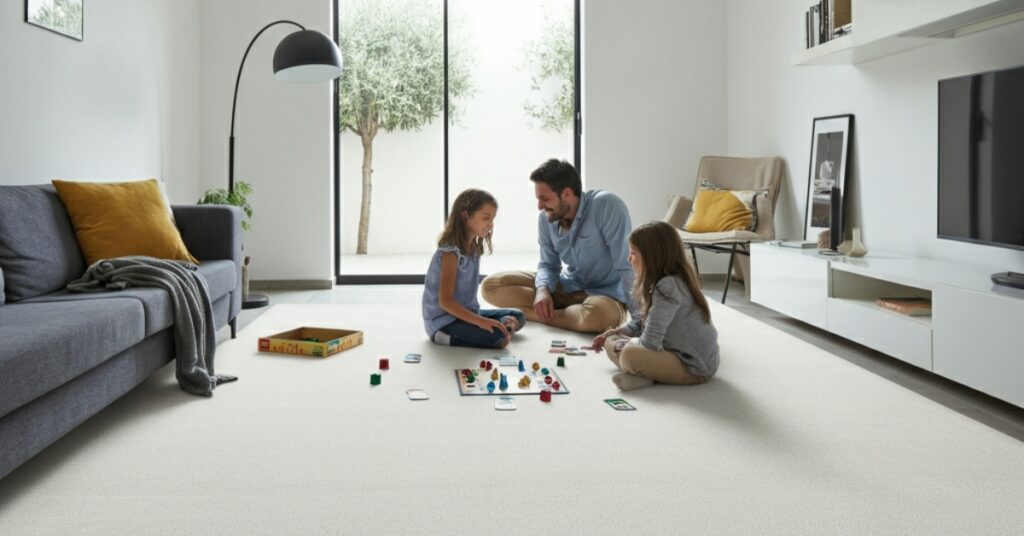As an Amazon Associate, I earn from qualifying purchases.
Finding a wet patch on your carpet can be alarming. Knowing what to do when your carpet gets wet is crucial for preventing long-term damage, such as mold growth, subfloor rot, and persistent odors. Whether it’s from a small spill or a major leak, acting quickly can save you from costly repairs and replacements down the line. This guide provides a clear action plan to help you effectively dry your carpet and address the source of the moisture.
This isn’t just about sopping up water; it’s about protecting your home and your investment. By following these instructions, you can manage the situation efficiently. You will learn how to assess the damage, remove the water, dry the area completely, and sanitize it to ensure your carpet is clean and safe. This process will help you restore your flooring and give you peace of mind.
Assess the Situation and Find the Source
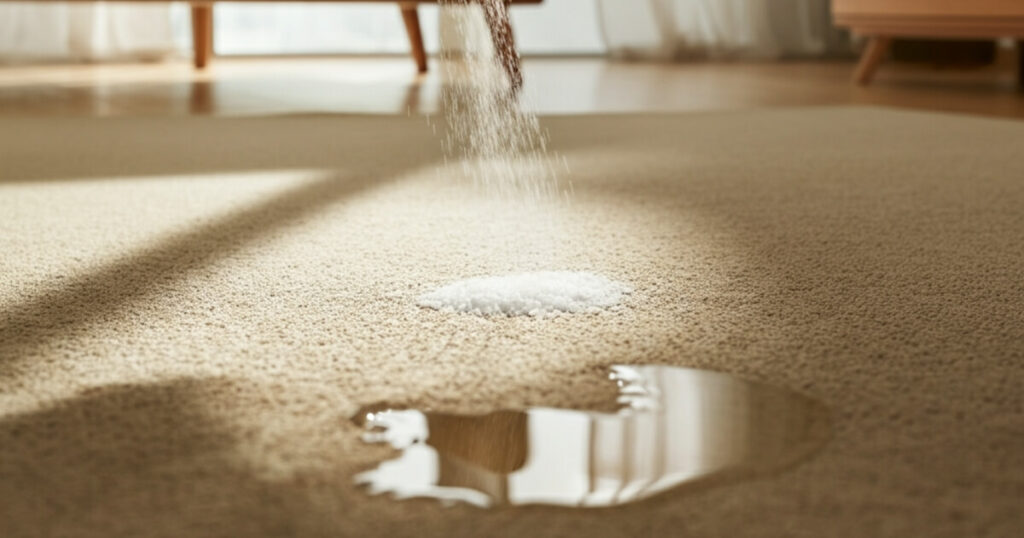
Before you begin cleaning, you must identify the source of the water. Stopping the flow of water is the most important first step. Check for common culprits like a leaking pipe, an overflowing appliance, a roof leak, or a flooded basement. If you find an active leak from a pipe or appliance, shut off the main water supply to your home immediately to prevent further damage.
Once you stop the water, evaluate the extent of the damage. Determine how large the wet area is and how saturated the carpet and padding have become. You also need to identify the type of water you are dealing with. Water is categorized into three types: clean water (from a supply line), gray water (from an appliance like a dishwasher), and black water (from sewage or floodwaters). Gray and black water contain contaminants and require professional handling.
What to do when your carpet gets wet from a hidden leak
Hidden plumbing leaks are a frequent cause of mysterious wet carpet spots. Pipes located behind walls or under floors can develop small leaks that slowly seep through building materials and eventually surface on your carpet. These leaks can go unnoticed for a long time before you see any visible signs. To identify a hidden leak, you can check for moisture or soft spots on nearby baseboards and drywall.
Another useful tip is to monitor your water bill for any sudden increases, as this can signal a continuous hidden leak. Professional plumbers often use tools like moisture meters and thermal imaging cameras to find these leaks without tearing down walls. However, you can perform a simple check yourself by turning off all water fixtures and observing your water meter to see if it continues to run.
What to do when your carpet gets wet from an appliance
Household appliances connected to a water supply are common sources of leaks that can affect specific carpeted areas. Washing machines, for example, can have supply line failures, pump leaks, or drain overflows that send water directly onto the floor. Similarly, water heaters might develop tank leaks or connection problems, while dishwashers can leak from door seals or drain lines.
To prevent these issues, regularly inspect water supply lines and drain connections on all your appliances. Check washing machine hoses for any cracks or bulges and consider replacing them every five years. Also, listen for unusual sounds or look for water pooling around appliances, as these can be early signs of trouble. Placing absorbent mats under appliances can also help catch small leaks before they spread to your carpet.
What to do when your carpet gets wet from the HVAC system
Your heating, ventilation, and air conditioning (HVAC) system can also cause localized moisture problems. Condensation from air conditioning ducts can drip onto your carpet if the insulation is damaged or the drain system malfunctions. Additionally, if your HVAC system causes humidity imbalances, moisture can condense directly on your carpet in certain spots.
To address this, you should inspect your ductwork for any visible condensation or water stains. Ensure the drain pans under your air conditioning units are clear and draining properly. Cleaning blocked drain lines can prevent overflow. Professional HVAC technicians can also assess your system to ensure it is sized correctly and managing humidity effectively, which is crucial for preventing moisture-related issues.
Remove Excess Water Immediately
Once you have stopped the source of the water, your next priority is to remove as much moisture from the carpet as possible. For small spills, you can start by blotting the area with thick, absorbent towels. Press down firmly on the towels to soak up the water. Repeat this process with dry towels until you can no longer pull significant moisture from the carpet.
For larger areas, a wet-dry vacuum is an essential tool. This type of vacuum is specifically designed to extract water from carpets and upholstery. Go over the wet area slowly and repeatedly, allowing the vacuum to pull out as much water as possible. This step is critical because the less water left in the carpet and padding, the faster the drying process will be.
What to do when your carpet gets wet with pet accidents
Pets often choose specific spots on the carpet for urination, creating recurring wet spots that might seem mysterious at first. Even well-trained pets can have accidents, and the scent left behind encourages them to use the same spot again. Standard cleaning products often fail to remove the odors that pets can detect, leading to repeated incidents.
When dealing with pet accidents, it is crucial to use an enzymatic cleaner. These cleaners are specifically designed to break down the organic compounds in urine that cause persistent odors. For the best results, allow the cleaner to sit on the affected area for the recommended time before blotting it up. Using a black light can also help you find old pet stains that are not visible in normal lighting.
What to do when your carpet gets wet from foundation issues
Moisture from a basement or crawl space can seep upward through the foundation and subfloor, causing wet spots on your carpet. Cracks in the foundation, poor waterproofing, or improper grading around your home can allow water to accumulate underneath. This moisture then travels through the building materials and appears on your carpet, often in predictable patterns.
To prevent this, you should improve the drainage around your home’s foundation. Ensure the ground slopes away from your house, and keep your gutters clean. Sealing foundation cracks and applying waterproofing treatments can also block moisture infiltration. Inside, using dehumidifiers and vapor barriers can help control basement humidity and stop moisture from rising to the upper floors.
Dry the Carpet and Padding Thoroughly
After removing the excess water, you need to dry the carpet and the padding underneath completely. If the padding is soaked, it can be very difficult to dry and may need to be replaced. To check the padding, carefully pull back a corner of the carpet in the affected area. If the padding is saturated, it is best to remove and discard it to prevent mold growth.
To dry the remaining carpet and subfloor, use a combination of fans and a dehumidifier. Position several high-velocity fans to blow air directly across the surface of the carpet. This will help evaporate the remaining moisture. A dehumidifier will pull moisture out of the air, which speeds up the drying process and prevents the humid environment that mold loves. Let the fans and dehumidifier run continuously for at least 24 to 48 hours, or until the carpet is completely dry to the touch.
What to do when your carpet gets wet from a roof leak
Roof leaks can be deceptive because water can travel along structural elements before dripping onto your ceiling and carpet. A leak in one part of the roof might cause a wet spot in a completely different room. This makes identifying the source of a roof leak challenging. Slow leaks from gradual roof deterioration can also go unnoticed until significant moisture has already accumulated.
To find a roof leak, inspect your attic during or right after a rainstorm. Look for water stains, wet insulation, or active dripping. Also, check around any roof penetrations, like vents or chimneys, where flashing can fail. Professional roofing contractors have specialized equipment to locate leaks that are not visible to the naked eye. Documenting the location of the leak can help them make efficient repairs.
What to do when your carpet gets wet from condensation
Significant temperature differences between your indoor and outdoor environments can lead to condensation on your carpet, especially near exterior walls, windows, and doors. Poor insulation or air sealing allows cold surfaces to form condensation when they come into contact with warm, humid air. This is a common issue with single-pane windows or poorly insulated walls.
To control condensation, improve the insulation around your windows and exterior walls. Installing storm windows or upgrading to energy-efficient double-pane windows can make a big difference. Ensure your home has adequate ventilation to remove humid air. Using dehumidifiers and ceiling fans can also help reduce indoor humidity levels and improve air circulation, preventing condensation from forming.
Clean and Sanitize the Area
Once the carpet is completely dry, you need to clean and sanitize it to remove any lingering bacteria or musty odors. You can use a carpet cleaner with a sanitizing solution or create your own by mixing equal parts white vinegar and water. Before applying any solution, test it on a small, hidden area of the carpet to ensure it does not cause discoloration.
After cleaning, sprinkle baking soda over the entire area and let it sit for several hours or overnight. Baking soda is excellent at absorbing any remaining odors. Finally, vacuum the baking soda thoroughly. This final step will leave your carpet smelling fresh and feeling clean. If you are dealing with a large area or water from an unsanitary source, it is always best to hire a professional carpet cleaning service. Looking for a fresh perspective? This post offers new ideas: How to Dry Out Carpet After a Water Leak?
FAQs
1. How quickly should I start drying a wet carpet?
You should start the drying process immediately. To prevent mold and mildew growth, the carpet needs to be completely dry within 24 to 48 hours.
2. Can I save the carpet padding if it gets wet?
It depends. If only a small area of the padding is damp, you might be able to dry it by lifting the carpet and using fans. However, if the padding is soaked, it is best to replace it, as it can harbor mold and bacteria.
3. What is the best way to remove odors from a wet carpet?
After the carpet is dry, sprinkle a generous amount of baking soda over the area, let it sit for several hours, and then vacuum it up. For persistent odors, a professional cleaning may be necessary.
4. When should I call a professional for a wet carpet?
You should call a professional if the flooded area is large, if the water is contaminated (black or gray water), or if you suspect mold growth. Professionals have the equipment and expertise to handle these situations safely.
5. How can I prevent my carpet from getting wet in the future?
Regularly inspect pipes, hoses, and appliances for leaks. Ensure proper drainage around your home’s foundation and maintain your roof. Addressing small issues promptly can prevent major water damage.
Protect Your Carpet and Your Home
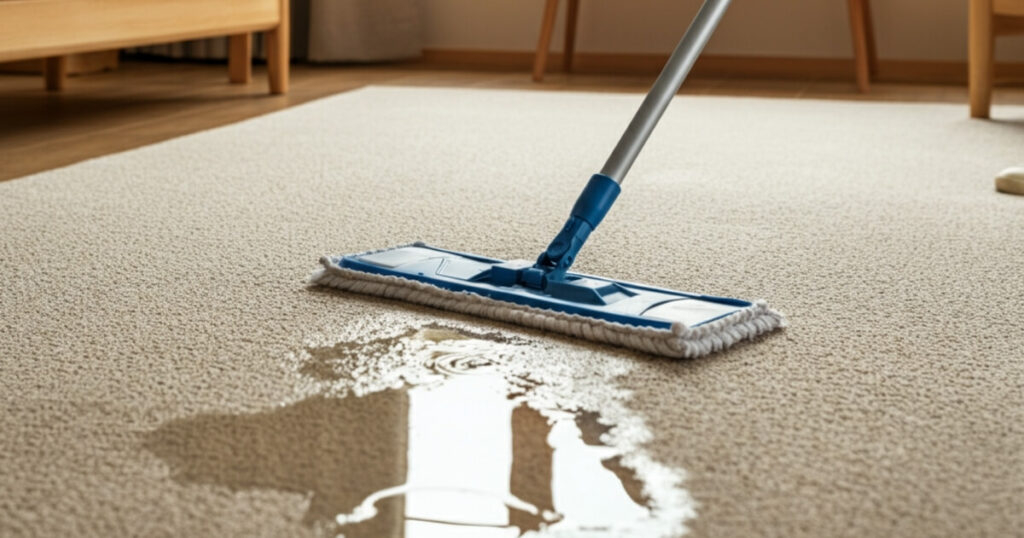
Knowing what to do when your carpet gets wet is essential for any homeowner. By following these steps—stopping the source, removing the water, drying the area, and sanitizing—you can effectively handle most water incidents. Quick action is your best defense against lasting damage and the health risks associated with mold and mildew.
Remember that while many small spills can be handled as a DIY project, larger floods or those involving contaminated water require professional help. Do not hesitate to call a water damage restoration specialist to ensure the job is done right. By taking immediate and appropriate action, you can protect your carpet, your home, and your family’s health.
As an Amazon Associate, I earn from qualifying purchases.

